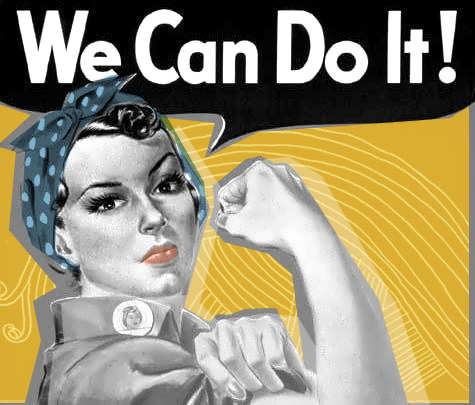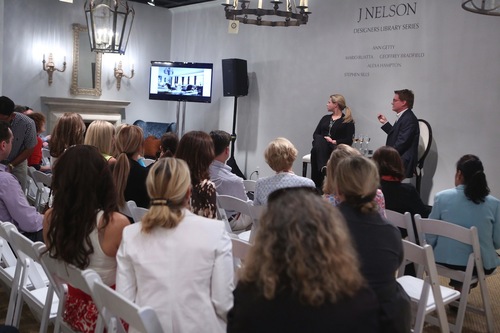The first office I ever worked in was in a windowless basement with about a dozen people crammed into enough space for six. The most exciting facility was a kettle which was also a health and safety hazard. Such a cramped, impractical environment might well make Monica Parker’s hair curl – Parker is workplace director at leading UK workplace fit-out, strategy and design company Morgan Lovell . “The hair-curling offices are still out there!” she says, with a laugh. But there are fewer of them today thanks to Morgan Lovell. The company’s strategies for creating offices that are not only fantastic places to work but that also enhance employee well-being, creativity and engagement go way beyond choosing nice décor and comfy chairs. A solid basis in ethnographic research, a policy of treating each business as an individual case that needs an individual solution, a strong dose of creativity and an emphasis on sustainability have led to success with clients as diverse as Talk Talk , eBay , Npower and Rackspace – whose office is complete with customised Mini Cooper and the reproduction of 10 Downing Street for meetings. It’s not just about spaces with wow factor, although that can be important – it’s all about spaces that empower employees and help businesses grow and thrive.
So: how do you create an office space that makes people want to come to work?

“A space with autonomy and flexibility – that’s a space that can transform a business” Monica Parker, Morgan Lovell
“In my opinion, culture trumps design – a good design reflects the culture of the business. The key is having spaces that reflect a culture of everything that motivates and drives people. A space with autonomy and flexibility – that’s a space that can transform a business. Employers are starting to realise that space can be a tremendous lever. People and property are your best assets. You presumably do your best to hire the best people you can and office space is now being seen as a significant factor in recruiting, maintaining and maximising talent. If you have big brains working in your building, you want them bumping into each other – not just sitting at a lump of wood. When you create a bit of flexibility, you’re creating a whole new dynamic in the workplace. People feel trusted more when they are given responsibility for their own output, given freedom. It’s about autonomy, mastery and purpose, as Dan Pink says.”
“People tend to say they just want a space that works! The key is to remember, like any system, it’s about energy in and energy out. Well-meaning people create a brief saying ‘This is what we want’ but anything that’s assumption-based rather than evidence-based will only give a cursory solution. We work with evidence. Even if it’s a standard, transactional piece of design, we try to underpin it with a significant amount of evidence. But for a brief that’s truly aligned with a company’s cultural aspirations, we need to engage with that company’s behaviours. We use ethnographic research. Hatch , our analytic tool, uses big data aligned with a predictive behaviour algorithm which is based in social science. It takes 50 years of social science research and applies it in many other environments to predict how people will behave. I was part of the team who did Google’s first occupancy evaluations; Google wanted to use science to prove that its spaces worked. I’d just started my master’s degree looking at behaviour in the workplace and took an academic approach, applying it to Google’s workplace to see if we could determine which factors would drive knowledge-sharing. That survey took five days, so I asked myself how I could make it commercial: create a degree of social-science robustness but also get results in 15 minutes. That’s how Hatch came about. Morgan Lovell uses it and so do other companies with an interest in well-being and behaviour – it’s currently in development for NGOs. Hatch has become an independent tool in its own right, it’s standing up across industries and being picked up by the HR field as it can give understanding of drivers for change. I’m more and more being asked to do change management. That helps companies avoid installing fancy new spaces that people don’t use. For example, why have a contemplation space if you don’t have a culture of contemplation? Even the best-meaning managers sometimes just want what they want, and that can be fraught with bias.”
“I was previously a homicide investigator for the Department of Justice, trying to get people off death row who didn’t belong there, and this helped me realise the effect that environment can have on people – not just prison, where there is an absence of all control, but an environment of poverty, an absence of stimuli, how that affects mental health and shapes the personality… It hit me that this is not something cursory – not something about aesthetics. We shape buildings but they shape us too. We spend more waking time in our offices than anywhere else – why wouldn’t that have an impact on us? Something like 70% of people are ‘checked out’ 70% of the time [ Gallup, 2013 ]. If we can give people the stimuli they need through their work environment – not just a purple chair! – that has an impact on individuals, families, communities, the whole country.”
“We make no assumptions. We never start by saying ‘this is a tech firm so it does x, this is a financial firm so it does y’. We start with a real focus on each individual business. Our team works in pairs to avoid bias. Making an assumption that a brand’s external representation guarantees a business is run a particular way is the reason you sometimes find workplaces that don’t fit. For example an office might have a slide that no-one uses, purely because the company operates in a sector that is seen as ‘funky’. We approach each project like a research project, from an academic point of view. We have a thesis and we start with the big questions and narrow them down to conclusions. For example, we worked for Nuffield Health , the biggest well-being provider in the country, who wanted their office to become a blueprint for wellness. It was a perfect brief as it started from ‘we need to create something better for our people’ rather than ‘we need to fit x number of people into this space’. Now their office has an organic canteen, a state-of-the-art gym, some fixed desks, some that are mobile, and a world-class training facility. It speaks to the Nuffield Health ethos of modernity, learning, well-being. They didn’t just plaster their logo on the walls – you really feel the ethos of the company. It was hard work as there were a lot of stakeholders – although the company is non-profit it’s a big business – but now the office feels like a home for the Nuffield ‘family’.”
“If I’d wanted to do what I do now 10 years ago I would have needed to be in Holland! But times have changed: factors such as new technology, different communities, four different generations in the workplace and the cost of central properties have combined to create opportunities and drivers. People are looking around and seeing that the average office is only 50% occupied and they are challenging long-held assumptions about what the workplace is, what the office is for. Some people have been looking at those questions for 20 years, certainly, but these questions have only become generally enabled in the past five to seven years and we’ve only gained activity-based working in that time, as consideration of different settings has picked up speed.”
“There’s no question that a well-thought-out office offers clear returns. Some people look at staff as a cost, some look at staff as an investment, but either way, at some point you’re going to have to spend something. An activity-based setting doesn’t have to cost more, it just has to be better thought out. And if you have a well-thought-out smaller office and let your staff also work from other places, it can actually cost you less. It’s an investment in higher performance, in engagement, in recruiting and in training top staff.”
Source:



